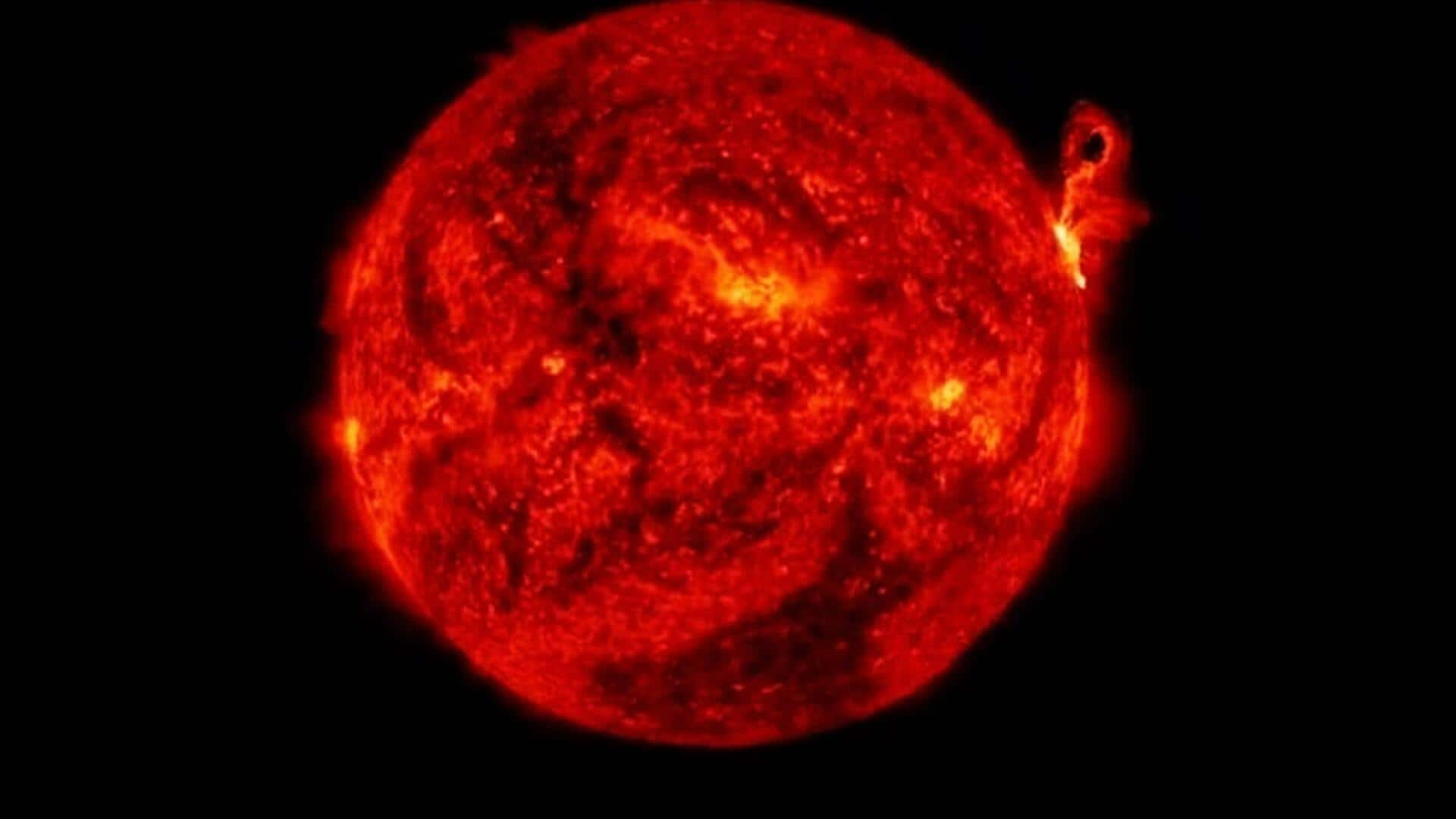
What is solar maximum and how dangerous it can be
What's the story
Roughly every 11 years, the Sun goes through a solar cycle. We are currently seeing the 25th solar cycle which is expected to reach its peak, called the solar maximum, as soon as 2024, according to recent research. This is a year before the initial predictions and as per researchers, the upcoming solar maximum will be much more powerful than originally thought.
Solar maximum
What happens during a solar cycle?
Per NASA, during the 11-year solar cycle, the Sun goes from being rather calm—a phase called the solar minimum—to active and stormy, or solar maximum. The process repeats in a similar fashion. At the solar minimum, the Sun's magnetic field is organized. But during solar maximum, the Sun's magnetic poles flip, shifting the north pole into the south pole and vice versa.
Period
As Sun's magnetic field weakens, it ramps up solar activity
As the solar cycle progresses, the Sun's magnetic field gets tangled, with some areas becoming more magnetized than others. Eventually, the magnetic field weakens, bringing an increase in solar activity. When this magnetic energy is released, it sets off intense bright bursts of radiation, called solar flares. Sometimes, flares are accompanied by fast-moving particles called coronal mass ejections (CMEs).
Information
We are currently inching toward peak of 25th solar cycle
Why do solar cycles typically last 11 years? That's something we are not sure of yet. Astronomers observed the first solar cycle between 1755 and 1766. The current 25th solar cycle started in December 2019, per NASA.
Sunspots
Scientists track solar cycles by monitoring sunspots
One way scientists track solar cycles is by monitoring sunspots, regions on the Sun that appear darker because they are cooler than the surrounding areas. The Sun's magnetic field is the strongest at sunspots. In January, scientists observed over twice as many sunspots as NASA had predicted, 143 versus 63. This is a crucial indicator that the Sun is inching closer to solar maximum.
Solar flare
Number and intensity of solar flares are also an indicator
Another important indicator of solar maximum is the frequency and intensity of solar flares. Solar flares fall under five classes: A, B, C, M, and X. Each class is about 10 times stronger than the preceding one. 2022 saw fivefold more C-class and M-class solar flares than in 2021. Further, the first half of 2023 recorded more X-class flares than the whole of 2022.
Geomagnetic storms
Solar flares can also be associated with geomagnetic storms
Solar flares can also bring geomagnetic storms, which are disturbances in the Earth's magnetosphere brought about by solar wind or CMEs. The surge in the number of geomagnetic storms that struck our planet this year has caused the temperature in the thermosphere— which is the second-highest layer of Earth's atmosphere―to reach the highest in the past two decades.
Impact
Solar storms can be risky for Earth-orbiting satellites
So how dangerous can solar storms be? Solar storms can ionize Earth's upper atmosphere and this can impact Earth-orbiting satellites, either causing them to collide with each other or fall out of orbit. The radiation from these storms can even pose a threat to spacecraft and astronauts. Intense storms can disrupt long-range radio and communication systems and hamper power grids.